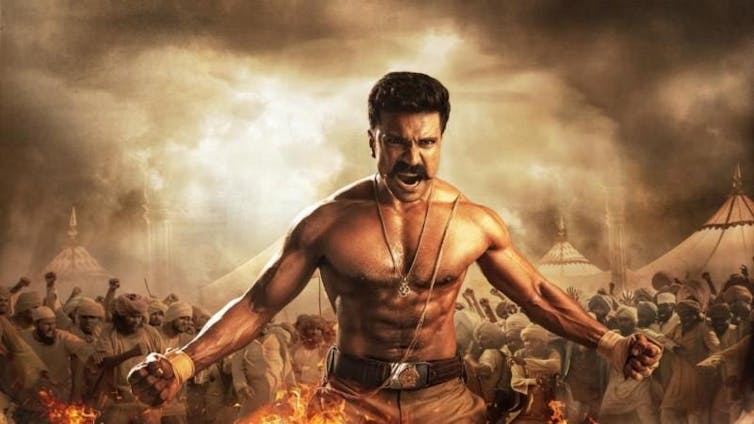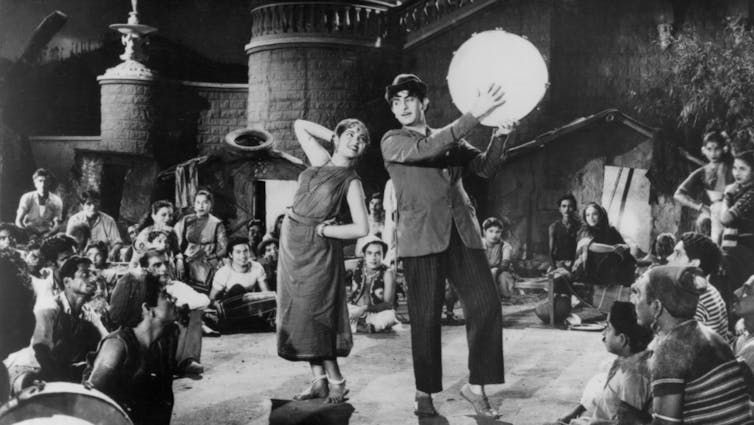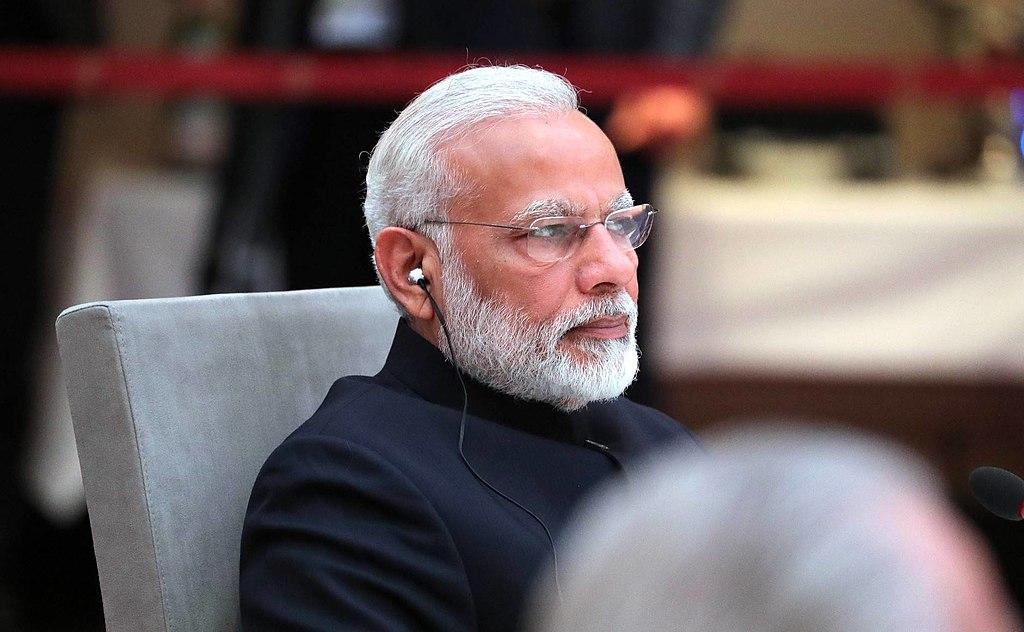As the world’s largest electorate goes to the polls in India, political parties are seeking to sway voters through popular culture, like film. Although cinema has long reflected and influenced the country’s political and social cultures, right now, Bollywood (and other Indian films) are a major boon to the current right-wing government.
Led by Prime Minister Narendra Modi, the Hindu nationalist Bharatiya Janata Party (BJP) is currently gunning for a third term in office.
First established as the political wing of the RSS (Rashtriya Swayamsevak Sangh) — a paramilitary, volunteer organization — the BJP is one of two main political parties in India. The BJP believes that India, which is 80 per cent Hindu, is fundamentally a Hindu nation. Their platform has partly succeeded because of its widely appealing characterization of India as a post-colonial powerhouse. The opposition, The Indian National Congress, is a secular party. Last month, while campaigning, Prime Minister Modi delivered a speech that was widely criticized as Islamophobic.
On today’s Don’t Call Me Resilient podcast, political scientist Sikata Banerjee of the University of Victoria and cinema studies scholar Rakesh Sengupta of the University of Toronto, explain how cinema and social media operate to produce ideas that include “a vicious vocabulary of hate against minorities and dissenters” in India. All of which may be helping to sway voters.
“In Modi’s India, when people are asking these questions, why am I poor? Why am I feeling so worthless? The answer is always the Muslims,” says Banerjee. “The Muslims have taken away your wealth. They’re taking all the jobs…You see very clearly how Modi is getting people on board with this idea of the Hindu imagined community.”
It is partly this message of Islamophobia, mixed with a modern Hindu pride, that has infiltrated Bollywood, the largest film industry in the world churning out approximately 1,500-2,000 stories a year. These films have helped to circulate ideas of a newly imagined and highly appealing, strong and victorious India. That storytelling is in part bolstered by streaming platforms and social media like YouTube and WhatsApp, which have an even bigger reach than Bollywood films.
Some films, like last year’s breakout ‘Tollywood’ movie RRR, honoured at last year’s Oscars, retell history from the perspective of the current “victors.” Another recent example of a film accused of distorting history is Swatantra Veer Savarkar based on the life of Vinayak Damodar Savarkar, who developed the Hindu nationalist political ideology of Hindutva.

In ‘RRR’ a muscular hero emerges (played by Ram Charan). (RRR)
Sengupta at the University of Toronto says the relationship between cinema and state in India have always been historically intertwined. “So you can always historically see a kind of reflection of the state of a particular time in the cinema of that time, he says. "Under the current regime of Hindu nationalism, we are witnessing more and more and more films being made on Hindu pride and Muslim violence.”
Polls in India opened on April 19 and undergoes seven phases until it close on June 1, 2024. Results are announced on June 4.
My thoughts are that Bollywood is now vernacularizing Hollywood blockbusters by mainstreaming colonialist fantasies of the Hindutva far-right. The rhetoric of ‘India Occupied Pakistan’ in this xenophobic trailer plays to the gallery of those who dream of an ‘Akhand Bharat’. https://t.co/LZQge7o00m
— Rakesh Sengupta (@Rakesh_Sengupta) January 15, 2024
Go deeper

Raj Kapoor with Nargis in ‘Sree 420,’ one of Bollywood’s first post independence heros. (Sree 40)
Film and TV discussed
- Awaara (1951) and Sree 420 (1955)
- Sholay (1975)
- The Chess Players or Shatranj Ke Khilari (1977)
- Dilwale Dulhania Le Jayenge (1995)
- Kal Ho Naa Ho (2003)
- Tanhaji: The Unsung Warrior (2020)
- Tandav (2021)
- A Night of Knowing Nothing (2021)
- RRR (2022)
- All that Breathes (2023)
The Oscar-winning music track from the Tollywood film, ‘RRR’



 UN Rights Chief Defends Diversity Amid Rising Antisemitism
UN Rights Chief Defends Diversity Amid Rising Antisemitism  U.S.-China Relations: Wang Yi and Marco Rubio Discuss Key Issues
U.S.-China Relations: Wang Yi and Marco Rubio Discuss Key Issues  Elon Musk Sparks Controversy with Support for Germany’s Far-Right AfD
Elon Musk Sparks Controversy with Support for Germany’s Far-Right AfD  Brazil Condemns Use of Handcuffs on Deported Citizens
Brazil Condemns Use of Handcuffs on Deported Citizens  Africa without borders could help the continent prosper – what’s getting in the way
Africa without borders could help the continent prosper – what’s getting in the way  Trump Administration Eyes Oracle-Led TikTok Deal Amid Security Concerns
Trump Administration Eyes Oracle-Led TikTok Deal Amid Security Concerns  What is a migrant? What is ICE? 10 terms to help you understand the debate over immigration
What is a migrant? What is ICE? 10 terms to help you understand the debate over immigration  Why your retirement fund might soon include cryptocurrency
Why your retirement fund might soon include cryptocurrency  Nintendo Switch 2 and anticipated sequels – what to look forward to in gaming in 2025
Nintendo Switch 2 and anticipated sequels – what to look forward to in gaming in 2025  Donald Trump’s presidency presents Benjamin Netanyahu with a crisis that could be existential – here’s why
Donald Trump’s presidency presents Benjamin Netanyahu with a crisis that could be existential – here’s why  Trump’s Commerce Nominee Howard Lutnick to Face Senate Hearing
Trump’s Commerce Nominee Howard Lutnick to Face Senate Hearing  Trump Pledges to End Taxes on Tips During Las Vegas Visit
Trump Pledges to End Taxes on Tips During Las Vegas Visit  Trump's Aid Pause Strands Over 40,000 Afghans Approved for U.S. Visas
Trump's Aid Pause Strands Over 40,000 Afghans Approved for U.S. Visas  Denmark’s new royal coat of arms marks the end of a 400-year-long Swedish-Danish conflict
Denmark’s new royal coat of arms marks the end of a 400-year-long Swedish-Danish conflict  Trump Administration Challenges California Vehicle Emission Standards
Trump Administration Challenges California Vehicle Emission Standards  Trump Administration Ousts Inspectors General Across Major Federal Agencies
Trump Administration Ousts Inspectors General Across Major Federal Agencies 
































